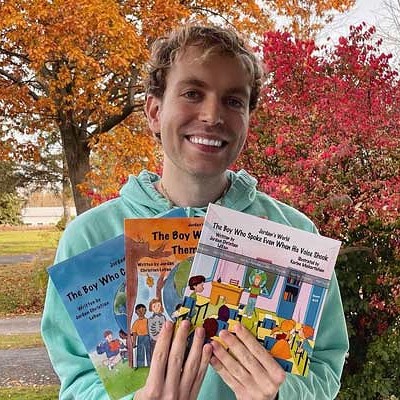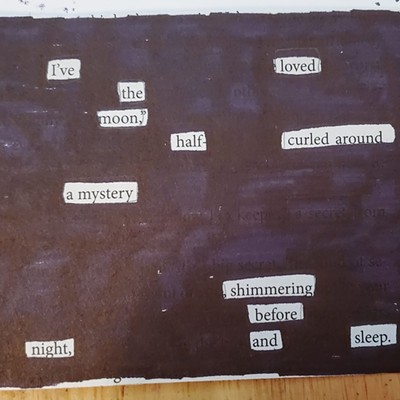[
{
"name": "500x250 Ad",
"insertPoint": "5",
"component": "15667920",
"parentWrapperClass": "",
"requiredCountToDisplay": "1"
}
]
For the first time in modern political history, fewer city of Rochester residents voted in the November general election than in the primary. In the interest of voter empowerment, democratic legitimacy, and a broadly representative, functioning local government, we should take steps to make sure this does not happen again.
There are solutions to low urban turnout that have proven effective in cities and states that have recognized the issue as a crisis and moved to address it. And it is a crisis.Rochester Mayor Malik Evans was effectively chosen by 12 percent of city voters, whose primary ballots moved him into the general election, where he faced no opponent. Meanwhile, City Council and school board candidates who won their primaries faced token opposition on the November ballot. Roughly 800 fewer city voters turned out in November than for the June primary. The result was that only 18 percent of city voters cast ballots in the general election, with some areas of the city seeing less than 10 percent turnout.
With registered Democrats outnumbering Republicans almost seven to one in the city, the primary election is the de facto election in this one-party town. Voters choose who will serve in positions including mayor, City Council, school board, and city court in primary elections. Eight Monroe County Legislature seats primarily based in the city also are decided in primary contests. Competitive general election challenges are rare: even when there are candidates on ballot lines other than the Democratic Party, they receive a low vote share and struggle to raise money. Voters correctly understand big decisions have already been made by the time the general election rolls around, creating the turnout issues we saw this year.
Even many registered Democrats are effectively disenfranchised because candidates typically spend resources only communicating with frequent primary voters, creating a reinforcing loop. In the general election, we saw demographic disparities in turnout.The whiter, richer 24th Monroe County Legislative District had more than five times as many voters turn out as the 22nd Monroe County Legislative District, a high-needs, majority Black and Brown district. In effect, our city elections have an intertwined legitimacy and diversity issue.
Thanks to the many other cities that have implemented different voting systems, we know how to fix our local democracy, by embracing reforms that allow and encourage more voters to participate.
NON-PARTISAN AND RUNOFF MUNICIPAL ELECTIONS
"There is no Democratic or Republican way to pick up the garbage," New York City Mayor Fiorella LaGuardia famously said.
Yet municipal elections in New York's largest cities continue to be partisan — meaning candidates run on party lines. If more than one member of the same political party runs, a primary election determines the party nominee who appears on the November ballot.
It is a stark contrast to what occurs in most other American cities. More than three quarters of all municipalities in the U.S. hold non-partisan elections in which candidates do not run on party lines. These municipalities include major cities like Los Angeles, Chicago, and Dallas. All voters, regardless of party, are able to participate.
Some reformers have concerns that nonpartisan elections may discourage turnout and cause confusion, especially among voters of color, by removing partisan labels that have historically helped voters make decisions. As an alternative, Rochester could move to a runoff system.
Switching our elections to a runoff system would have a similar effect. In a runoff system, there are two elections, usually still referred to as a primary and general. Instead of moving forward one candidate per political party and restricting votes to enrolled members of specific parties, however, any registered voter can cast a ballot for any candidate in the first round, and the top two candidates move forward to the general election, regardless of their party.
Boston's recent mayoral election used a non-partisan runoff system. A September preliminary election sent the top two vote-getters to face off on Election Day in November.
Consider how many voters are shut out of the process of choosing local representatives because they cannot vote in a primary. The number of city voters not affiliated with a party has grown by 41 percent in the last decade. Unaffiliated voters now account for one in five voters in the city. Non-partisan elections would give this growing bloc of voters the chance to participate.
With non-partisan and runoff elections, every election could feature an ideologically significant and potentially competitive general election. With every general election having real meaning, voters are given choices beyond a rubber stamp approval of candidates already selected in partisan primaries.
OTHER IDEAS
There are other options to improve voter turnout that are practices in cities and towns across the country.
"Open primaries", where voters can vote in a partisan primary without being registered to a specific party, would give all voters a chance to weigh in on partisan nominees.
Another idea is to reconsider the timing of local elections and ensure that they coincide with larger-stakes contests. In some years, like 2021, there are nothing but local races on the ballot. One study suggests that moving local elections to coincide with presidential elections results in an 18.5 percentage point jump in turnout. Meanwhile, local elections that coincide with the November midterms enjoy an almost 9-point increase in turnout on average.
Lastly, we can consider the physical act of voting and accessing a ballot.Research shows universal mail voting has a positive impact on overall turnout, without clear benefits to one political party or another.
The structural problems of local democracy are the result of choices we've made about how and when citizens of Rochester can participate in the electoral process. If the political will is there, we can choose a different path going forward that will better reflect and represent the people of Rochester.
Rachel Barnhart is a Democrat representing the 21st District in the Monroe County Legislature. Joseph Burgess is a Data Curator at the Roper Center for Public Opinion Research at Cornell University, and an independent expert and consultant on local government issues.


